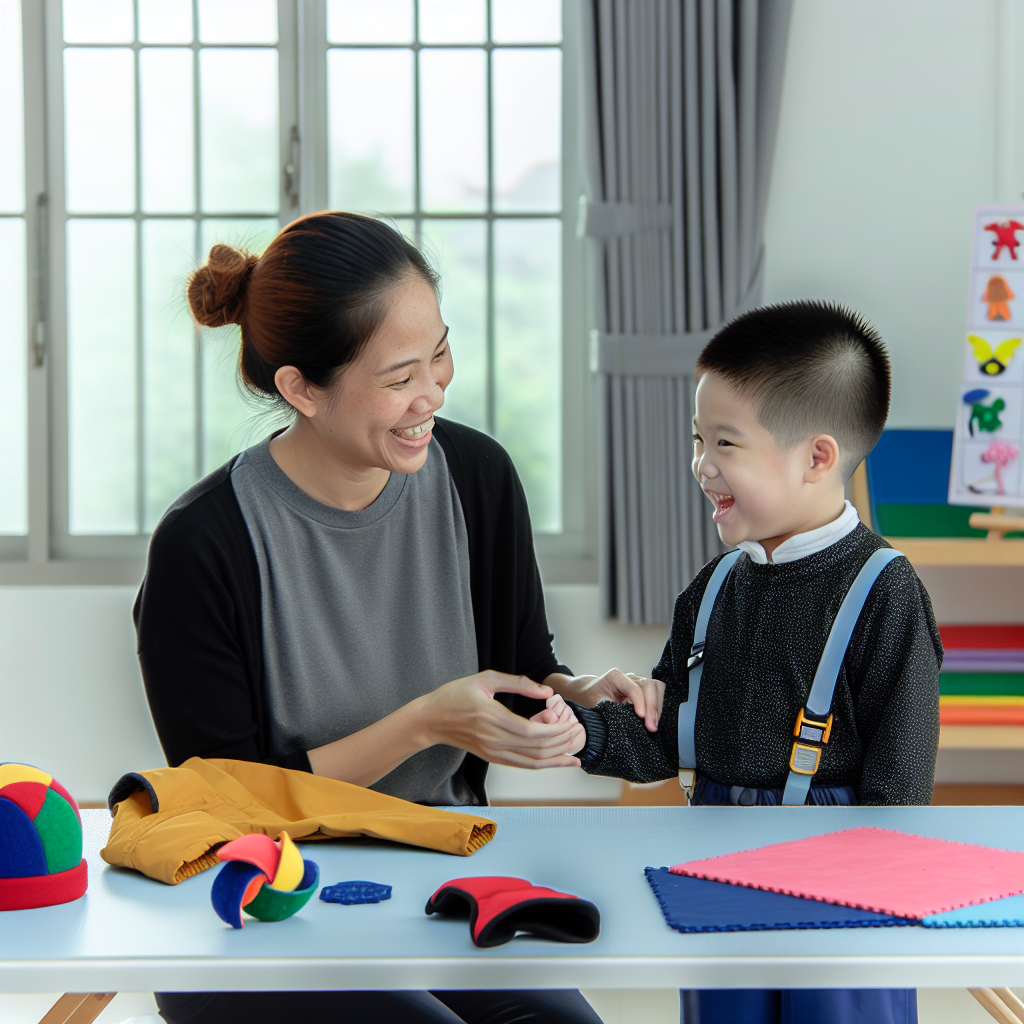The Effects of Motor Fluency on Dressing Tasks and Decreasing Escape Behaviors
Introduction
Many children with autism spectrum disorder (ASD) struggle with dressing independently. Dressing is a complex, multi-step skill requiring coordination, dexterity, and problem-solving. When children find dressing difficult, they may display escape behaviors such as crying, throwing clothing, or refusing to participate.
A new study by Bryson and Zea (2024) explores how motor fluency training can improve dressing skills and reduce escape behaviors. The researchers used Precision Teaching (PT) and frequency-building techniques to help two young children with ASD become more fluent in basic motor skills related to dressing. The results are promising, showing that increasing motor fluency can lead to greater independence and fewer problem behaviors.
Understanding the impact of motor fluency on daily living skills can help behavior analysts and educators develop better intervention strategies. In this blog, we’ll break down the key findings from this study and how they can be applied to support children with ASD.
What Is Motor Fluency and Why Does It Matter?
Defining Motor Fluency
Motor fluency refers to the ability to complete movements quickly, accurately, and effortlessly. When a child struggles with basic motor fluency, they may perform movements more slowly, with more errors, or with greater effort. This can lead to frustration and avoidance behaviors.
Breaking Down Dressing Tasks into Component Skills
Dressing is a composite skill, meaning it consists of multiple component skills that must work together. Some key motor components involved in dressing include:
- Reaching (grabbing a piece of clothing)
- Pulling (bringing pants up while seated or standing)
- Push + Pull coordination (maneuvering fabric)
- Grasp + Release (holding and letting go of clothing items)
If a child struggles with one or more of these component skills, dressing becomes challenging and stressful.
Escape-Maintained Behaviors in Dressing Tasks
Many children with ASD exhibit escape-maintained behaviors when faced with difficult tasks. In this study, the researchers identified four common escape behaviors:
- Requesting help without making an attempt
- Crying (with or without tears)
- Throwing clothing items
- Engaging in stereotypy (e.g., repetitive hand movements, vocalizations)
By improving motor fluency, the researchers aimed to reduce these behaviors and increase the children's independence.
Using Precision Teaching to Build Fluency
What Is Precision Teaching (PT)?
Precision Teaching is a data-driven approach that focuses on increasing speed and accuracy of skills. PT uses:
- Timed practice sessions to reinforce component skills
- The Standard Celeration Chart (SCC) to track progress over time
- Frequency-building techniques to improve fluency
By practicing basic motor skills in a fast and structured format, children can develop smooth, automatic movements that make dressing easier.
Study Participants and Setup
The study focused on two four-year-old boys with ASD, Chris and Harley. Both children had difficulties with dressing and demonstrated escape-maintained behaviors.
The intervention took place in a structured clinical setting using various tools to support skill development, such as:
- TheraBands for resistance training
- Small objects and shopping carts for grasping and moving items
- Headbands and other accessories to enhance reach-and-release skills
The Intervention: Frequency Building for Motor Skills
Study Design: AB Case Study Approach
The researchers used an AB single-case design, where:
- Baseline (A phase) measured the children’s skill levels before intervention.
- Intervention (B phase) introduced timed motor fluency training sessions.
How Frequency Building Was Implemented
The intervention focused on:
- Timed practice drills – Short, repeated trials of component motor skills (starting at 6 seconds and increasing to 60 seconds).
- Precision adjustments – Each session’s results determined the next steps in training.
- Emphasizing accuracy and fluency – Encouraging quick, error-free responses.
By developing automaticity in motor movements, dressing became easier and required less cognitive effort, leading to fewer escape behaviors.
Results: Increased Fluency, Decreased Escape Behaviors
The intervention produced positive results for both children:
1. Faster and More Accurate Dressing
- Both boys showed significant improvements in their ability to complete dressing tasks.
- They could complete tasks faster and with fewer errors, leading to a smoother dressing routine.
2. Reduction in Escape Behaviors
- Crying and asking for help decreased significantly as motor skills improved.
- Throwing clothing and engaging in stereotypy became less frequent.
3. Increased Independence in Daily Routines
- Improved fluency allowed the children to dress themselves with less frustration.
- Parents and clinicians noticed greater confidence and willingness to participate in dressing tasks.
Key Takeaways for Behavior Analysts
The study by Bryson and Zea (2024) highlights several important lessons for behavior analysts and educators:
- Breaking down composite tasks into component skills improves learning and skill acquisition.
- Motor fluency training can reduce escape-maintained behaviors, making daily routines smoother.
- Precision Teaching is an effective approach for targeting dressing-related motor skills and increasing independence.
By incorporating these strategies, behavior analysts can help children with ASD develop greater self-help skills and reduce frustration during daily living activities.
Final Thoughts: Practical Applications
For clinicians and educators working with children who struggle with dressing, incorporating motor fluency training into therapy sessions can yield significant improvements. Consider implementing:
- Short, frequent motor fluency drills to develop dressing-related skills.
- Data-driven techniques like Precision Teaching to track and adjust interventions.
- Individualized support based on a child’s specific motor skill deficits.
By focusing on fluency rather than just accuracy, children can achieve more independent, automatic, and frustration-free dressing skills.
Want to learn more?
For a deeper dive into this study, check out the full research article:
📖 Bryson, A. M., & Zea, M. D. (2024). "The Effects of Motor Fluency on Dressing Tasks and Decreasing Escape Behaviors." Behavior Analysis in Practice, 17:316–322.
🔗 DOI: 10.1007/s40617-023-00839-4
By applying evidence-based strategies like motor fluency training, we can help children build lifelong skills and increase their independence.



